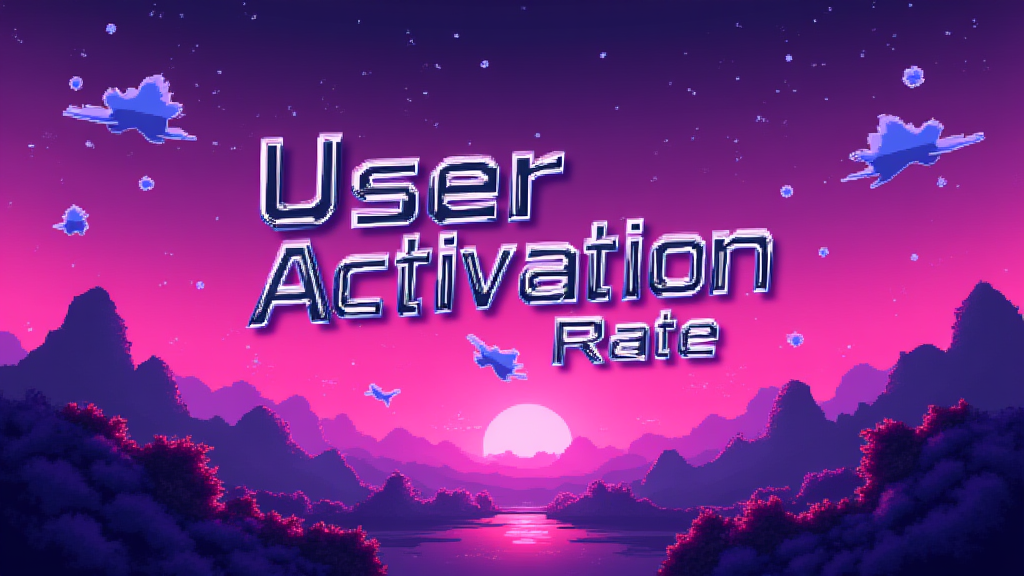User Activation Rate: Key Metric for Growth

Published on: October 01, 2024
In the world of Sales and Marketing Operations, understanding and optimizing user engagement is crucial for business growth. One key metric that plays a vital role in this process is the User Activation Rate. 📊
What is User Activation Rate?
User Activation Rate is the percentage of new users who complete a specific set of actions or achieve a predefined milestone within a given timeframe after signing up for a product or service. This metric is essential for measuring the initial success of user onboarding and the effectiveness of early engagement strategies.
Why is User Activation Rate Important?
User Activation Rate is a critical indicator of:
- Product-Market Fit: A high activation rate suggests that your product meets user needs effectively.
- Onboarding Effectiveness: It reflects how well your onboarding process guides users to experience your product's core value.
- Future Revenue Potential: Activated users are more likely to become paying customers and have higher lifetime values.
- User Experience: It provides insights into the initial user experience and potential friction points.
Calculating User Activation Rate
The formula for User Activation Rate is:
$$\text{User Activation Rate} = \frac{\text{Number of Users Who Completed Activation Event}}{\text{Total Number of New Users}} \times 100\%$$
Example Activation Events
- Completing a profile setup
- Making a first purchase
- Inviting team members
- Using a key feature multiple times
Strategies to Improve User Activation Rate
Improving your User Activation Rate can significantly impact your overall business performance. Here are some strategies to consider:
- Optimize Onboarding: Create a smooth, guided onboarding experience that highlights your product's core value.
- Personalize User Journey: Tailor the activation process based on user segments or use cases.
- Provide Clear Value Proposition: Communicate the benefits of completing activation events clearly.
- Implement Gamification: Use progress bars, badges, or rewards to encourage activation.
- Offer In-app Guidance: Use tooltips, walkthroughs, or chatbots to assist users in reaching activation milestones.
User Activation Rate vs. Other Metrics
| Metric | Focus | Timeframe |
|---|---|---|
| User Activation Rate | Initial engagement | Short-term (days/weeks) |
| Retention Rate | Ongoing engagement | Long-term (months/years) |
| Conversion Rate | Turning leads into customers | Varies |
Common Challenges in Measuring User Activation Rate
While User Activation Rate is a powerful metric, it comes with its own set of challenges:
- Defining the Right Activation Event: Identifying the most meaningful action that indicates true user activation can be complex.
- Setting Appropriate Timeframes: The activation window may vary depending on the product and user segment.
- Balancing Speed and Quality: Pushing for quick activation might compromise long-term engagement.
- Accounting for Different User Types: Activation events may differ for various user personas or use cases.
By focusing on User Activation Rate, businesses can gain valuable insights into their onboarding process, product-market fit, and potential for long-term success. 🚀
Implementing User Activation Rate in Your Strategy
To effectively leverage User Activation Rate in your Sales or Marketing stack, consider asking yourself these questions:
- What specific actions truly indicate that a user has experienced our product's core value?
- How can we streamline our onboarding process to guide users towards these key activation events?
- What data do we need to collect and analyze to accurately measure our User Activation Rate?
- How can we segment our users to create more personalized activation strategies?
- What tools or technologies can we implement to track and improve our User Activation Rate over time?
By addressing these questions, you'll be well on your way to optimizing your User Activation Rate and driving sustainable growth for your business. 💡
















